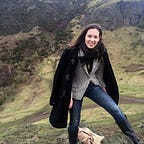Castles Built on Sand
For a Westerner among Westerners, life is good in the Emirate capital of Abu Dhabi, if not a bit surreal.
In Abu Dhabi, four in five residents are expats. Outsiders come and go, on contracts, in waves.
By my imprecise measure, craning my neck at the beachfront resorts, a rough half are academics, diplomats, corporate employees, the military, and the other half are their attending spouses, along for the ride, and likely not hard-pressed (if even able) to find a job. But, there is plenty to keep them entertained: Every brunch is a soirée. Every happy hour unfolds at a five-star hotel. (In the other of Abu Dhabi’s overlapping worlds, Sharia Law reigns, and only the tourism industry is granted liquor licenses.)
When I stayed with a friend — an artist and arts instructor at the New York University campus—in the spring of 2017, several art museums of international repute were just on the brink of opening their doors: a satellite of the Guggenheim, a satellite of the Louvre. Their garden bistros will serve camel burgers. The nicest hotel in town puts gold flakes in their camel milk cappuccinos. The long thin beaches of the Persian Gulf sport bright white sand and ice cream kiosks.
Most of the metropolis unfurls on man-made islands — Saadiyat, Al Maryah, Yas. Oases of flora burst forth from the highway medians like magic. The government makes clouds sometimes, so there might be rain to water them. It’s very, very hot.
A short drive outside the city limits, east toward Oman or south toward the center of the Arabian Peninsula, the medians grow suddenly less lush. A sprawl of malls fades into vast tan dunes. Sand slides across the highway in sheets, like a glass door opening and closing in front of you.
There are more construction cranes in the UAE than in any other country in the world, I heard, and I believe. Abu Dhabi is a forest of them. So many roads are works in progress, you could arrive somewhere in the morning and see your route has been redone or erased when you try to GPS your way home at night.
The pristine new NYU campus is cut through with green walkways and miniature, decorative fountain-canals. A grove of palms stands outside the student center, exotic Eurasian hoopoes flitting between the fronds. Enrollment is ramping up, but for now, it feels eerily sparse. Behind the dining hall, a few chairs and tables are scattered on a small cement slab, for those who prefer dining in 110º heat over aggressive A/C. Beyond the slab, the edges of which are blurred by infringing sand, is a plain of flat nothingness that stretches for many football fields. Construction cranes waver in a heat shimmer at the edge of the horizon.
Sitting at a long studio table in the cavernous arts facilities, I felt a rumbling. It was familiar — what a New Yorker might feel sitting in a building built over the subway. It sustained.
“Is it an earthquake?” I asked my friend.
“It’s the sand compacting,” she told me.
At a construction site somewhere nearby, sand was removed from the ground, and the desert was rearranging itself to fill its place, acclimating, evening itself out.
In luxury skyrises built on sand, we drank Bombay & tonics. We rode in self-driving electric cars past spaceship-shaped skyscrapers. manmade rainclouds hanging above. There’s a foreboding feeling of impermanence coloring this opulent pocket of civilization at the edge of the Empty Quarter — the world’s largest desert—and it’s hard to tell: Is this city advancing toward something, or leaving something behind?
Photos in collaboration with Laura Schneider.
Originally published at roam-magazine.co on August 1, 2017.
